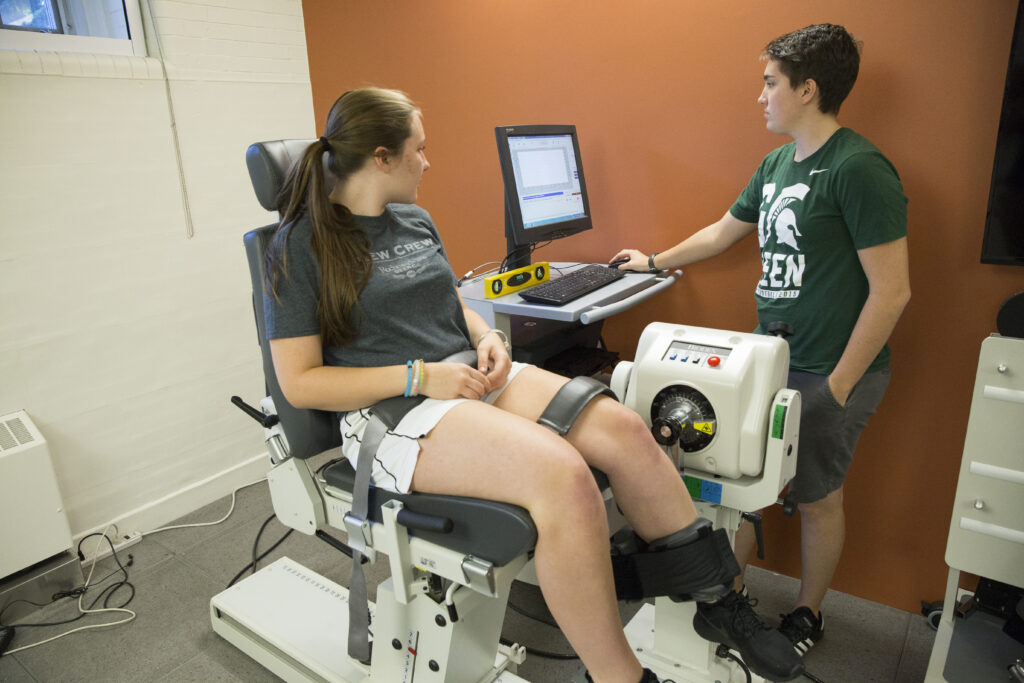Our data sources, descriptions of the methods,
and references to helpful papers.
Adolescent Data
Adolescent data

Patient-Reported Outcome Measures
Patient-reported outcome measures that characterize a patient’s knee-related function and psychological readiness for sport participation are recommended as a component of clinical assessment after ACLR.
IKDC Subjective Knee Evaluation Form
The International Knee Documentation Committee Subjective Evaluation form (IKDC) is a measure of knee function that was developed for use with patients who are ≥18 years old. The IKDC scores range from 0-100 with a score of 100 indicative of ideal knee function.
Pediatric IKDC
The PEDI-IKDC is a measure of knee function that was developed for use with 10 to 18 year-old patients with adequate psychometric properties. PEDI-IKDC scores range from 0-100 with score of 100 indicative of ideal knee function.
ACL-RSI
The ACL Return to Sport after Injury Scale (ACL-RSI) assesses psychological readiness for return to sport. The ACL-RSI is comprised of items that describe an individual’s emotions, confidence in performance, and risk appraisal related to re-engagement in sport after ACLR. ACL-RSI scores range from 0-100 with a score of 100 indicative of ideal psychological readiness for return to sport.
Physical Performance Measures
Single Leg Hop Assessments

Single Hop for Distance
Participants were allowed to freely move their arms throughout each hop task and completed practice trials to ensure comfort with task completion. Participants hopped forward as far as possible 3 consecutive times on one leg followed by a controlled single leg landing. ACLR and contralateral limb performance, measured from the starting point to the patient’s heel, was reported for each measure and a limb symmetry index (LSI, %) was calculated by dividing the involved limb value by the contralateral limb and multiplying the result by 100.
Triple Hop for Distance
Participants were allowed to freely move their arms throughout each hop task and completed practice trials to ensure comfort with task completion. Participants hopped forward as far as possible on one leg with a controlled single limb landing (i.e., maintain position 2-3 seconds with no loss of balance). ACLR and contralateral limb performance, measured from the starting point to the patient’s heel, was reported for each measure and a limb symmetry index (LSI, %) was calculated by dividing the involved limb value by the contralateral limb and multiplying the result by 100.
Crossover Hop for Distance
Participants were allowed to freely move their arms throughout each hop task and completed practice trials to ensure comfort with task completion. Participants hopped forward as far as possible 3 consecutive times while crossing horizontally over a 15-cm marked channel on the floor after each hop followed by a controlled single leg landing. ACLR and contralateral limb performance, measured from the starting point to the patient’s heel, was reported for each measure and a limb symmetry index (LSI, %) was calculated by dividing the involved limb value by the contralateral limb and multiplying the result by 100.
Lower Extremity Strength Measures

Isometric Knee Extension Strength
Participants were seated and secured with padded straps; hips flexed to 85° with arms folded across their chest. Isometric strength assessment was completed at 90° of knee flexion. Peak torque during the highest repetition was recorded and normalized to body mass (Nm/kg). A limb symmetry index (LSI, %) was calculated by dividing the involved limb value by the contralateral limb and multiplying the result by 100.
Isokinetic Knee Extension and Flexion Strength
Participants were seated and secured with padded straps; hips flexed to 85° with arms folded across their chest. Isometric strength assessment was completed at 90° of knee flexion. Peak torque during the highest repetition was recorded and normalized to body mass (Nm/kg). A limb symmetry index (LSI, %) was calculated by dividing the involved limb value by the contralateral limb and multiplying the result by 100.